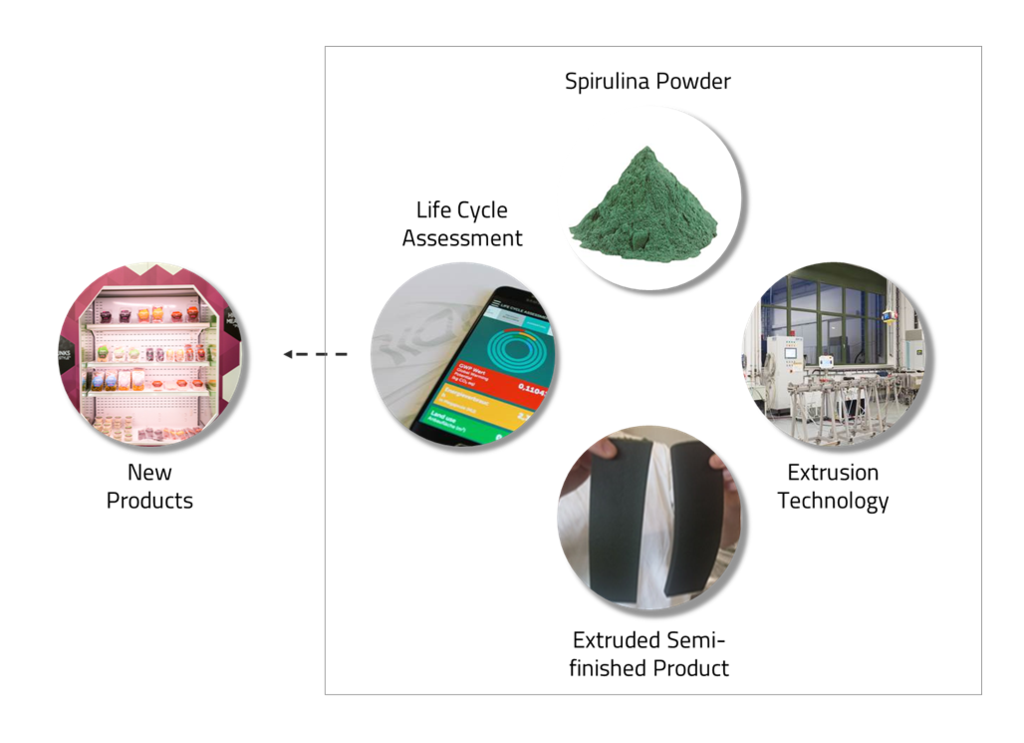Against this background, recent years have seen an increase in interest in microalgae in particular. They can be regarded as a sustainable alternative protein source for foodstuffs and animal feed, because under certain conditions, their production requires very little agricultural land or water, and the resulting greenhouse gas emissions are low. In Asia and Africa, the use of microalgae as a source of protein is nothing new. They have been used in food production there for many years. In recent years, microalgae have also become increasingly important in the west, for example in the areas of dietary supplements or superfoods. At the Deutsches Institut für Lebensmitteltechnik e.V. (DIL), scientists are researching spirulina algae in a project supported by the ‘Niedersächsiches Vorab’ in the German state of Lower Saxony and by the Ministry of Education and Culture (MWK). Other project partners are working groups from the universities of Vechta, Göttingen and Greifswald.
The objective of the DIL’s research work is to examine spirulina’s potential for use in the manufacture of alternatives to meat. As a dry mass, spirulina contains about 60% protein, but also vitamins, minerals and many biologically active substances. To manufacture alternatives to meat, the spirulina biomass is mixed with conventional protein sources such as soya, so that a fibrous texture and other characteristics similar to those of meat can be achieved. The spirulina-based products are produced using extrusion technology, in which the protein biomass is melted and an intermediate product similar to meat is produced. After extrusion, the DIL develops end products such as for example nuggets from the spirulina-based intermediate product. The University of Göttingen is examining consumer acceptance of the sensory quality of these innovative products. Current results show that up to 50% spirulina can be used in soya-based products. As well as product development, the DIL is also working on determining spirulina’s sustainability in comparison to traditional protein sources such as soya, peas and lupins. This determination is being carried out on the basis of a standardised life cycle assessment (LCA). It is conceivable that, also in Europe, the consumption of plant-based products, bread rolls and pasta etc based on microalgae could have a future.
You can find more information about the project ![]() here.
here.






